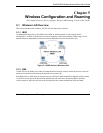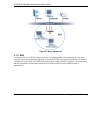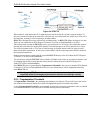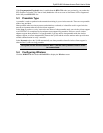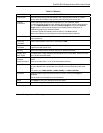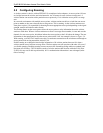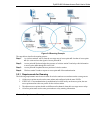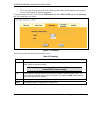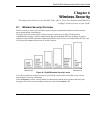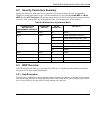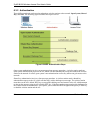
ZyAIR B-500 Wireless Access Point User’s Guide
5-8 Wireless Configuration and Roaming
5.5 Configuring Roaming
A wireless station is a device with an IEEE 802.11b compliant wireless adapters. An access point (AP) acts
as a bridge between the wireless and wired networks. An AP creates its own wireless coverage area. A
wireless station can associate with a particular access point only if it is within the access point’s coverage
area.
In a network environment with multiple access points, wireless stations are able to switch from one access
point to another as they move between the coverage areas. This is roaming. As the wireless station moves
from place to place, it is responsible for choosing the most appropriate access point depending on the signal
strength, network utilization or other factors.
The roaming feature on the access points allows the access points to relay information about the wireless
stations to each other. When a wireless station moves from a coverage area to another, it scans and uses the
channel of a new access point, which then informs the access points on the LAN about the change. The new
information is then propagated to the other access points on the LAN. An example is shown in Figure 5-6.
With roaming, a wireless LAN mobile user enjoys a continuous connection to the wired network through an
access point while moving around the wireless LAN.
Enable roaming to exchange the latest bridge information of all wireless stations between APs when a
wireless station moves between coverage areas. Wireless stations can still associate with other APs even if
you disable roaming. Enabling roaming ensures correct traffic forwarding (bridge tables are updated) and
maximum AP efficiency. The AP deletes records of wireless stations that associate with other APs (Non-
ZyXEL APs may not be able to perform this). 802.1x authentication information is not exchanged (at the
time of writing).




